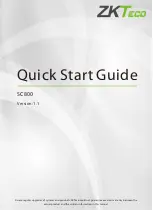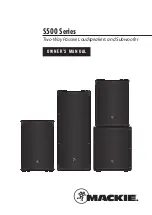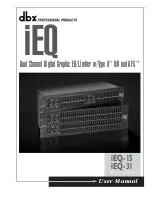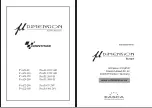
41
Main Menu
Press the
button
briefly
to open the
'
Main
Menu
'
, which then appears on the screen. Select a menu
point using the
/
buttons, and change the setting
using the
/
buttons.
The menu can be closed again at any time by pressing
the
or
button on the remote control
handset, or by holding the
button on the
machine’s front panel pressed in.
Listening mode:
At this menu point you can select the decoder’s playback
mode or sound field which you wish to use.
The decoder
'remembers' your chosen setting for each input, and
selects it every time you switch to that input.
Surround
The decoder detects an encoded
digital
multi-channel signal, decodes it and passes it to all the
output channels. The current mode of operation of the
decoder is displayed on the integral system screen. If the
signal is
analogue
, the decoder always uses Dolby Pro
Logic decoding.
Stereo
Even if a multi-channel signal is detected, the
decoder converts it into a stereo signal, i. e. all channel
information is mixed down and sent to the main left and
right loudspeakers.
Mono
All channels are mixed down onto the center
loudspeaker channel.
Mono I
Mode for two-channel TV sound
Generally
Channel I
transmits the synchronised sound.
The signal from Channel I is reproduced via the Centre
loudspeaker *);
Channel II
(original sound) is
suppressed.
Mono II
Mode for two-channel TV sound
Generally
Channel II
transmits the original sound. The
signal from Channel II is reproduced via the Centre
loudspeaker
*);
Channel
I
(original
sound)
is
suppressed.
Note:
*) If no Centre speaker is present (see
'
Loudspeaker
Menu
'
), the Centre channel is mixed onto the left and
right main speakers.
Not all signal sources (DVDs, CDs etc.), which are Dolby
Digital or dts Digital Surround encoded contain full 5.1
information. Even if the screen indicates that a particular
channel is present, this does not necessarily mean that
the loudspeaker in question will always produce sound.
In every playback mode signals may be present on the
subwoofer channel; this depends on the loudspeaker
arrangement you have selected in the
'
Speaker Setup
'.
Sound fields:
Disco
This sound field is particularly suitable for
providing an even spread of sound over a dance floor,
using the front and surround loudspeakers. The sound
signal is mixed and passed to the front and surround
speakers without reflections and delays, and with equal
power. The strongly concentrated sound reproduction
generates an immediate, energy-charged atmosphere
which is a great choice for any party.
Hall
Reverberant concert hall with sound reflections
from all directions. Ideal for playing back recordings of
large orchestras, or simulating the live atmosphere of a
large rock concert hall - an excellent choice for very
dynamic rock music.
Opera
This program combines clear voice reproduction
with the full sound of an orchestra, but without
exaggerated reverberation. The spatial sound towards
the rear is slightly limited, in the interests of better
orientation.
Arena
This sound image concentrates the “presence”
in the front area, helping to localise commentators and
dialogues on the screen. Sound from the rear is
designed to give the impression of being amongst the
spectators in the stadium. This sound field is also
suitable for TV shows and music programmes.
Club
The characteristic atmosphere of a cellar jazz
club, with a pattern of reflections dominated by large
floor and wall surfaces. Also good for simulating small
halls.
Church
Simulation of the acoustic conditions in a large
church, with long reverberation times. This sound field is
an excellent choice for sacred organ music.
Summary of Contents for DD 820 M
Page 1: ...V 2 0 Bestell Nummer Order No 9103 0291 BETRIEBSANLEITUNG USER MANUAL DD 820 M...
Page 2: ...2...
Page 34: ...34...
Page 35: ...35 English...
Page 69: ...69...
















































